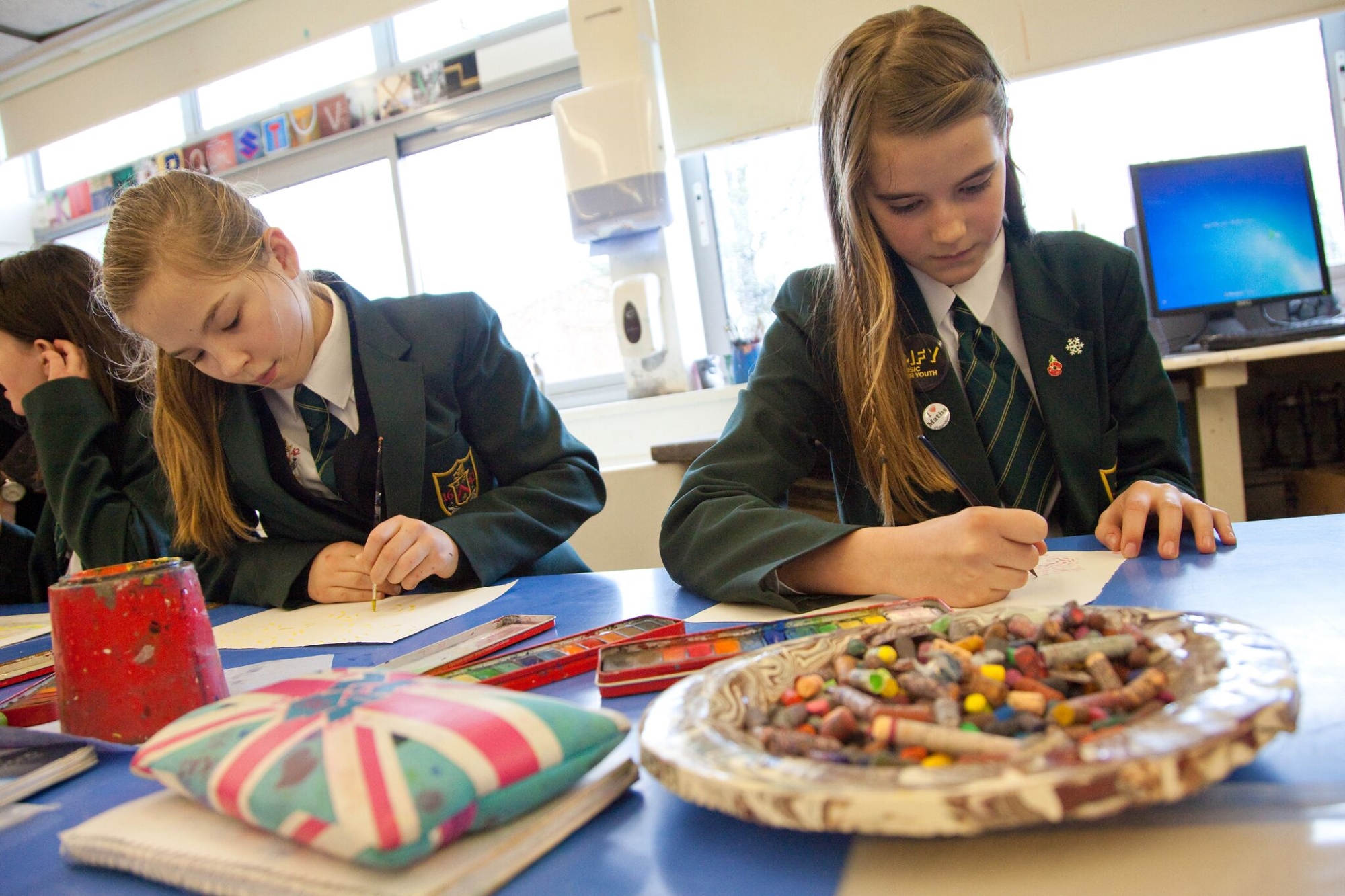Welcome to the Art Department
2023 - 2024

Jessica Brock
Curriculum Leader
Art Team
Mrs Athene Roy Classroom Teacher
Ms Sarah Moss Second in Department
Mrs Ali Spencer Art Technician
Art and Design Curriculum Overview
What is Art and Design and why is it important?
Art is the study of drawing, painting, sculpting, and designing, alongside creative and critical thinking.
When we look at the world that surrounds us, are eyes are bombarded by visual delights. From the Billard board that is advertising the latest trend, the teenager wearing the trainers that are currently in ‘vogue’ or our neighbour's new electric car; someone had to show imagination, creativity and skill to design and make what we see.
We teach art in school to expose students to discover their ability, skill, and enjoyment in the subject, so they can potentially develop into the next fashion designer, graphic designer, skilled tattoo artist or architect to name a few career opportunities.
What do students learn in Art?
In year 7 we start with the foundations of art and focus on the formal elements. We work on each formal element individually to build their knowledge and understanding and begin the journey of mastering these transferable skills when using varied materials, processes, and techniques.
As students work their way through the years they are introduced to new materials and processes and revisit each formal element developing their subject knowledge and continue to develop the mastery of skills.
Students are taught and encouraged to:
- Be engaged with artwork from diverse cultures and different eras.
- Form opinions and respond to artwork.
- Think conceptually about the work of others and their own outcomes.
- Make connections with other subjects and the ‘real world’ in the task that they are completing.
- Initiate innovative ideas.
- Express ideas in unique ways and form diverse perspectives.
- See mistakes as opportunities to learn.
- Problem solves through reasoning and understanding.
- Understand and appreciate where persistence can get you.
Summary of curriculum content
To view the Learning Journey for Art please click here.
Challenge and support in Art
The Art department set tasks that students believe are out of reach of their ability or skill range, but we know will be achievable through responsive teaching. We then build their confidence by breaking tasks down, modelling, teaching the tasks success criteria, using peer and self-assessment, giving verbal, and written feedback, and providing lots of praise. When completing the task students realise, they can achieve so much more than they first believed they could.
We challenge and expose our students to ideas and artwork that make them not just think about the aesthetics of what they are producing but also consider the concept of their work, whether it be spiritual, moral, social, or cultural; What do they want their audience to read into their work? How are they going to achieve this?
We teach students that no idea is unachievable, this includes material or scale, if they are prepared to put in the time, research, practise into developing their ideas.
In KS4 (Key Stage 4) we challenge students not to consider themselves students but have the mindset that they are artists who are trying to reach professional standards.
We challenge students to consider their futures to be in the art world.
How is Art assessed?
In Key Stage 3 we mark our students under the headings of Emerging, Developing, Secure or Excelling Artists.
Throughout the project there is a dialogue on how to reach these various levels and an indication of what level they are achieving. Students are guided and giving advise how to reach the next level or beyond, until the project is finished.
In Key Stage 4 students work towards attaining a GCSE qualification in Photography. A broad range of skills and techniques are developed and explored; students work towards being fully independent in their practice.
Students strive to meet the four assessment objectives provided by the exam board for both coursework and exam. Student are given verbal and written feedback to guide them to meet the assessment objectives.
Learning beyond the classroom
Details of EE clubs
Set design: This is where we create the set for the school production or musical. Students get to experiment working collaboratively and are given a little taster of the set design industry.
Ceramic club: This club is held weekly and is an opportunity to develop further skills than what is taught in the classroom.
Trips and visits
Year 10
London trip to Portrait and then Tate modern to develop ideas for their independent project. Trip should only cost the fee for a coach.
Year 9
Live online talk from the Artist Sarah Graham. This will include SMSC as she talks about how Art has helped her with Bipolar.
Trip to Southampton Art Gallery to view the art and take part in a workshop related to the SOL.
Year 7
Monet immersive experience in London.
Home learning in Art
Year 7 Architectural sculpture
Students are to research artists and architects to design and develop a 3D architectural sculpture.
Year 8 Careers
Students must pick a career from the following 5 choices Graphic designer, prop designer, make-up artist, costume designer or set designer. Once they have chosen their career, they need to research the career pathway from education to what you can earn at the top of the career chain. They are then given a scenario in which the need to plan, design and make their finished product based on their career choice.
In KS4 students will get weekly assignments that link to coursework that they are completing in the lesson. We have an open-door policy in Art and students can complete this work after school if they wish to use the school facilities to complete this.
Where can Art lead?
The creative industries sector contributed £109bn to the UK economy in 2021. The links below will help open understand all the different career choices. The Prospects link will provide information about education, explanation of the role and salaries that can be earnt.
https://lordslibrary.parliament.uk/arts-and-creative-industries-the-case-for-a-strategy/#heading-1
https://nationalcareers.service.gov.uk/job-categories/creative-and-media
https://www.prospects.ac.uk/job-profiles/browse-sector/creative-arts-and-design


